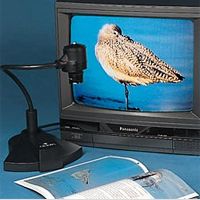My Cart
Your Shopping Cart is currently empty. Use Quick Order or Search to quickly add items to your order!
By Heather Ferguson
Product Developer

The hand-held video camera is an easy-to-use, engaging classroom tool. Video cameras are now readily available and affordable and are very much at home in 21st-century classrooms. Videos, particularly homemade videos, appeal to today’s learners. For teachers considering ways to incorporate video into learning, here is a list of ideas to get you started.
If you are interested in purchasing a classroom set of video cameras, consider the FlexCam® offered by Carolina.
As you and your students continue to work with video cameras, you will find many creative ways to enhance
instruction.